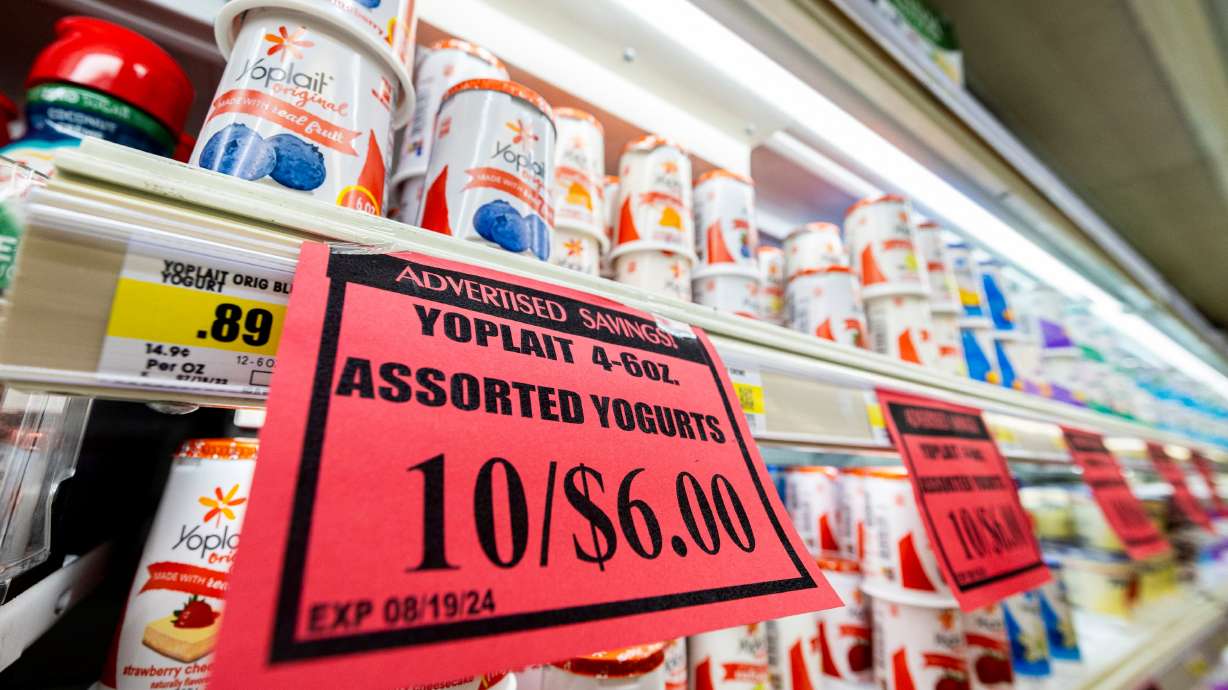Estimated read time: 3-4 minutes
This archived news story is available only for your personal, non-commercial use. Information in the story may be outdated or superseded by additional information. Reading or replaying the story in its archived form does not constitute a republication of the story.
- U.S. inflation rose 2.3% annually in October, with core PCE at 2.8%.
- The Federal Reserve will consider this data in its December policy meeting.
- Economists are divided on whether the Fed will pause or cut rates further.
SALT LAKE CITY — Prices on consumer goods and services moved up 2.3% on an annual basis in October, according to Wednesday's personal consumption expenditures report from the U.S. Department of Commerce. The rate was up 0.2% on a monthly basis, which matched the annual uptick from September's 2.1%.
The reading was in line with most economists' expectations ahead of the report, which is the Federal Reserve's preferred inflation metric.
Core PCE inflation, which strips out volatile food and energy prices, came in at 2.8% in October, up 0.3% month over month and 0.1% ahead of September's annual rate.
Increases in the cost of services, up 0.4% for the month, were the main driver of the inflation increase while the cost of goods rose 0.1%. Food prices increased less than 0.1% from September to October and energy prices were down 0.1% month-over-month. Housing costs rose 0.4% for the month.
What's next for the Fed
The Fed will consider the new data and a wide range of metrics at its next policy meeting, scheduled for Dec. 17-18. The monetary body has shifted its policy focus over the last few months and levied two straight reductions to its benchmark interest rate. Fed Chairman Jerome Powell recently said there is consensus among the body's board of governors that U.S. inflation is "moving reliably" toward the target goal of 2%.
Earlier this month, the Fed followed up on its September decision to cut its intra-bank overnight lending rate by 0.5% by levying an additional 0.25% reduction and bringing the federal funds rate into the 4.5% to 4.75% range.
Before the September reduction, the first in four years, the Fed's rate had stood at 5.25% to 5.5% since last summer and was the highest in 23 years after a series of 11 straight increases levied earlier by the monetary body in its efforts to quash inflation.
Following the Fed's November meeting, which occurred just two days after the election, Powell was asked repeatedly to weigh in on how the U.S. economy and the Fed's policy stance moving forward would be impacted by the outcome of the election. The Fed chairman noted no policy changes had yet been made and refused to speculate about potential future actions by President-elect Donald Trump's administration.
"In the near term, the election will have no effects on our policy decisions," Powell said. "Here, we don't know what the timing and substance of any policy changes will be. We therefore don't know what the effects on the economy will be. We don't guess, we don't speculate and we don't assume."
Will they, won't they?
Some economists believe the October inflation uptick could be enough fodder to push the Fed to take a pause on interest rate adjustments next month.
"This report will likely provide further ammo to Fed officials who prefer to lower rates gradually," Omair Sharif, chief economist at Inflation Insights, wrote in a client note, per The Associated Press, "and may strengthen the argument for a pause at the December FOMC meeting."
But the broader consensus opinion is that the Fed will close out the year with an additional reduction, likely 0.25%.
"The momentum in inflation toward the Fed's 2% target has sputtered recently but not enough, in our view, to prevent the Fed from cutting interest rates in December," Ryan Sweet, chief U.S. economist at Oxford Economics, wrote in a client note, according to a report by AP.










